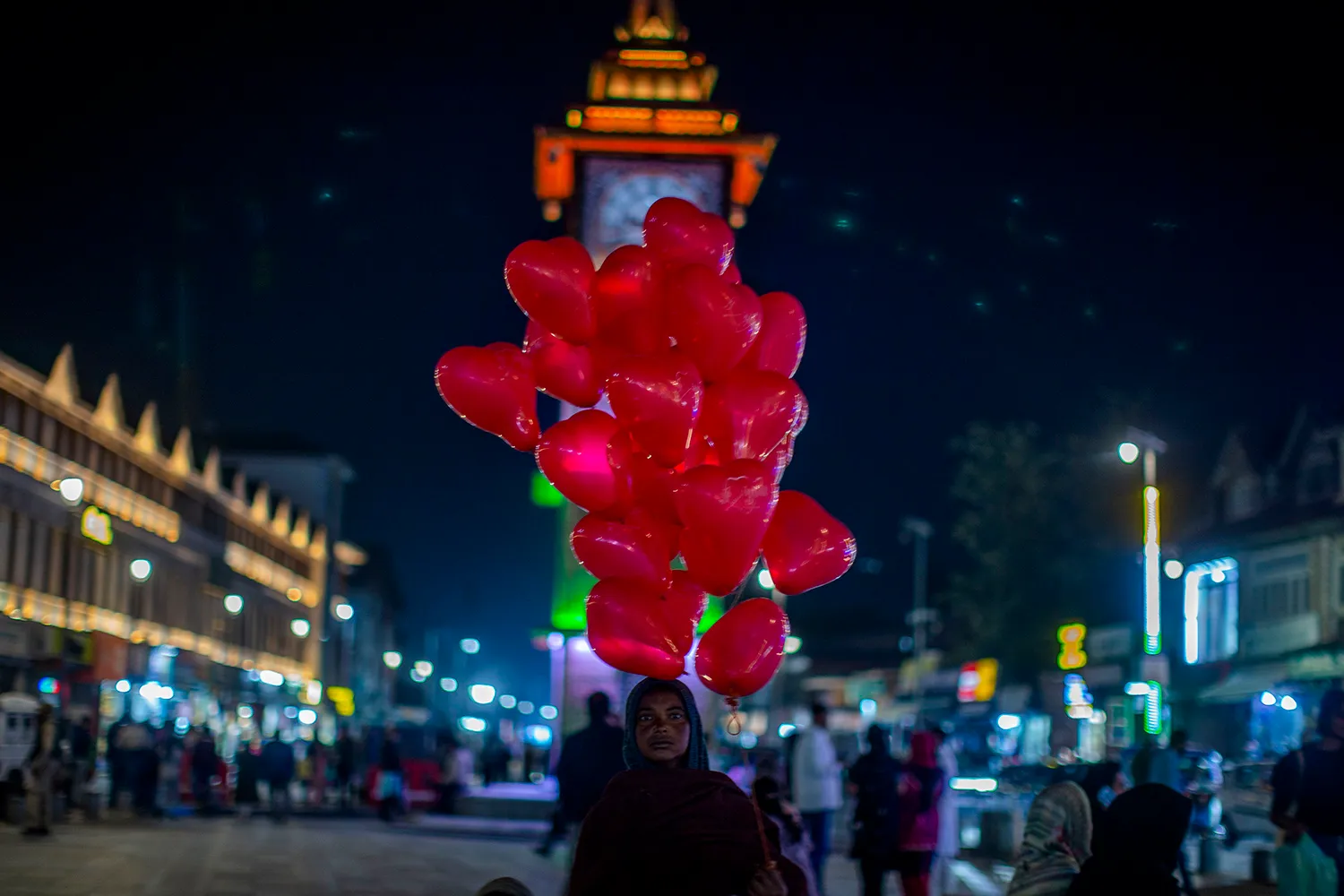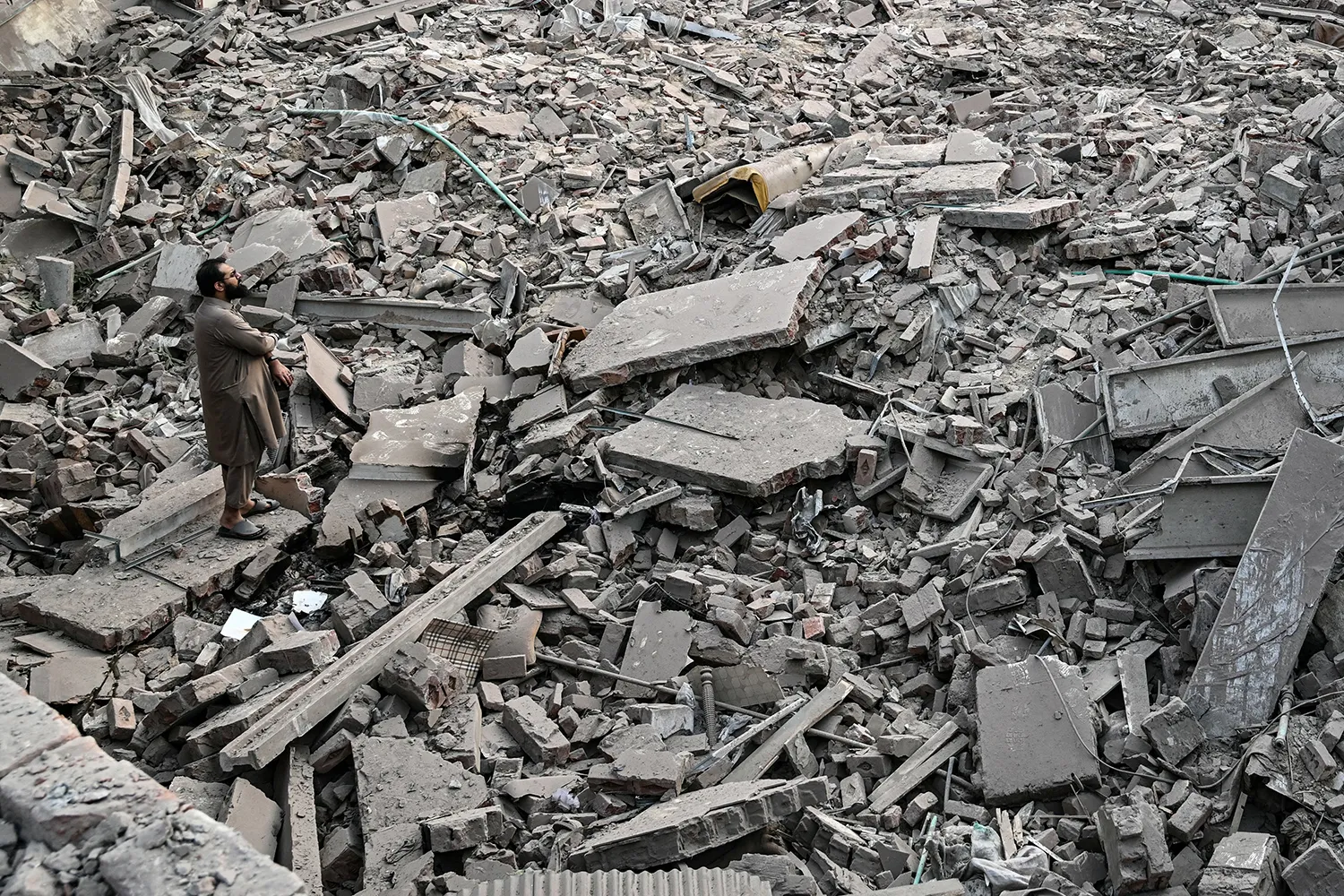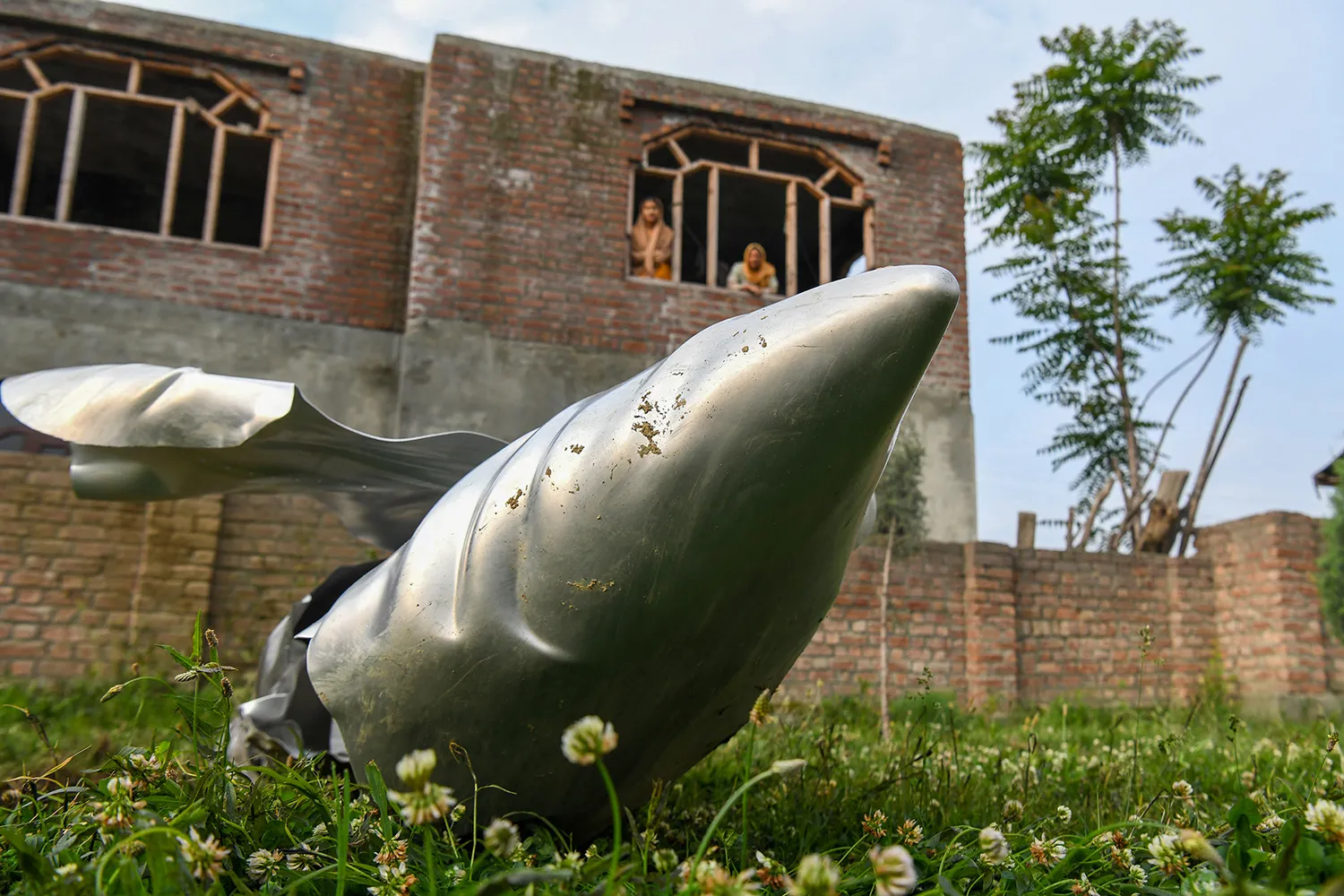India and Pakistan are once again at each other’s throats. Following a terrorist attack in Indian-administered Kashmir on April 22, New Delhi launched coordinated attacks this week that struck deeper into Pakistani territory than at any point in the last five decades. Islamabad is now threatening to retaliate. An optimistic reading of the situation could be that this has all happened before: The two rivals fought full-scale wars in 1947-48, 1965, and 1971 and have engaged in several major skirmishes since the 1990s, when they declared themselves as nuclear powers. In each case, and especially since enjoying the shield of a nuclear deterrent, the two nations found ways to eventually pull back and accept a stalemate over the disputed territory of Kashmir.
There is a more worrying prospect this time around. The world in 2025 looks very different than it did before: The United States appears disinterested in new foreign wars, major powers are tied up in conflicts on other continents, and multilateral organizations such as the United Nations have seen their credibility erode. As a result, international mediation that was instrumental in years past now seems less meaningful. India and Pakistan have also followed sharply different trajectories since their last serious conflict in 1999. At the turn of the millennium, India’s GDP was about five times that of Pakistan. Today, it is nearly 11 times larger. Greater economic clout has not led to a commensurate military advantage for India, but it has fanned a heady confidence among its citizens, along with a clamor for action. Israel’s overwhelming response to the Oct. 7, 2023, attack led by Hamas has also strengthened New Delhi’s assessment that other powers can’t—or won’t—stop it from exercising its right to defend itself. In Pakistan, meanwhile, the usually quiet army chief, Asim Munir, has become increasingly public-facing, suggesting a military climbdown may be more difficult to accomplish.
There is more than enough cause for concern, but an unlikely ray of light might come from the misinformation that swirls around conflicts between these two countries. Sometimes, the governments themselves are responsible for disinformation, with inflated claims or false denials that are then further promoted by jingoistic media on each side. In this polarized and siloed information ecosystem, claiming victory—whether real or imagined—could be a useful way for both sides to de-escalate.

Last month’s attack in Indian-administered Kashmir was not only the deadliest civilian attack in more than a decade, it was also particularly provocative: Militants reportedly forced tourists to reveal their religion by showing whether they were circumcised or by reciting an Islamic verse. Men who were outed as non-Muslim were gunned down. Twenty-six civilians were killed.
There have been some smaller attacks in the last year on India’s side of the disputed territory; this time, though, New Delhi promised a robust response. But against whom? This is where things get murky. A claim of responsibility from the Resistance Front, a little-known offshoot of the Pakistan-based terrorist organization Lashkar-e-Taiba, was quickly retracted with a statement that their communication systems had been hacked. Indian officials were meanwhile racing to find evidence linking the militants to their archrival by pointing to a long history of Pakistani sponsorship of cross-border terrorism—including the infamous 2008 Mumbai attacks, in which 166 people were killed.
The past, however, is not proof of the present. No clear evidence linking the April 22 attack to Pakistan has emerged in public. Instead, past and current Indian officials insist that Munir—a former spymaster with deep knowledge of militant activity in his country—must have known that an attack on Indian territory was imminent. Just days before, Munir delivered an incendiary speech in which he reiterated how Kashmir was vital to Pakistan’s identity. Munir has also been battling resentment among the army rank and file over unrest and violence in the western provinces of Balochistan and Khyber Pakhtunkhwa, in which Islamabad suspects an Indian hand—although there, too, no smoking gun exists.
Regardless, India attacked. Overnight on May 7, New Delhi announced that it had executed Operation Sindoor, targeting nine sites of “terrorist infrastructure” in Pakistan, including some as far as the province of Punjab. Pakistani Prime Minister Shehbaz Sharif called the strikes an “act of war” and added that Islamabad “has every right” to respond.

It may be difficult to imagine today, but there was a time when the rest of the world—and the United States in particular—played an important role in calming tensions in South Asia. As the historian Srinath Raghavan recounts in his book The Most Dangerous Place, Washington “swung into action” in the summer of 1999 when India and Pakistan, both newly nuclear-armed, were locked in conventional warfare in Kargil, a high-altitude border area in Ladakh.
The U.S. secretary of state at the time, Madeleine Albright, held regular calls with her Pakistani and Indian counterparts, making clear that the former had provoked the crisis and the latter should show restraint. Albright’s entreaties seemed to be falling short so she brought in President Bill Clinton, who proposed holding up a $100 million loan to Pakistan from the International Monetary Fund. That didn’t work either. Then, as U.S. intelligence suggested that Islamabad was flirting with nuclear war, Clinton invited Pakistani Prime Minister Nawaz Sharif to Washington and had “perhaps the most important and intense meeting of his presidency,” according to Bruce Riedel, a former CIA analyst and an advisor to four presidents, writing in the Hindustan Times two decades later. “The normally soft negotiator who usually sought compromise was tough and firm,” Riedel wrote. “I had never seen him more concentrated.” The two sides backed down, and Clinton ushered in an era of closer U.S.-India ties.
The 9/11 attacks once again thrust South Asia into the spotlight, given the close links between militant groups in Afghanistan and Pakistan. In December 2001, a terrorist attack on India’s Parliament in New Delhi sparked another crisis between India and Pakistan. This time, the Bush administration kicked into gear, with pressure from Secretary of State Colin Powell and his deputy, Richard Armitage, forcing Pakistani Gen. Pervez Musharraf to declare that “no organization will be allowed to indulge in terrorism in the name of Kashmir.” The unprecedented message allowed India’s government, led by Atal Bihari Vajpayee at the time, to hold off on a reprisal.
As recently as 2019, the last time India and Pakistan had a serious military exchange, Washington was once again intimately involved. “I do not think the world properly knows just how close the India-Pakistan rivalry came to spilling over into a nuclear conflagration,” then-Secretary of State Mike Pompeo wrote in his memoir, Never Give an Inch. “No other nation could have done what we did … to avoid a horrible outcome.”
Washington’s prior roles in negotiation raise the question of its influence this time around. The White House is preoccupied in different arenas as it races to negotiate a cease-fire between Russia and Ukraine and continues to backstop Israel in its assault on Gaza. Meanwhile, President Donald Trump is trying to strike individual trade deals with almost every country on Earth after his unilateral declaration of tariffs roiled the global financial system.
Trump’s national security team is also understaffed in an unprecedented way. The Department of Government Efficiency has slashed layers of critical expertise; there is no U.S. ambassador in India, Pakistan, or at the United Nations; Marco Rubio is doubling up as both secretary of state and national security advisor, which no diplomat has done since Henry Kissinger five decades ago; and Trump, in his first remarks regarding India’s attack on Pakistan, said that “they’ve been fighting for many, many decades, and centuries, actually, if you really think about it”—betraying an ignorance about two countries that came into being only in 1947.
While Rubio has spoken with his counterparts in New Delhi and Islamabad, his new role as national security advisor may limit his ability to travel outside Washington. Even so, it’s not just a question of the current White House’s capacity. Trump’s America First foreign policy doesn’t seem to prioritize the hard yards of diplomacy conducted by Albright or Powell—let alone the role of global police.
“The era of the liberal globalists running U.S. policy is over,” said Shivshankar Menon, a former Indian foreign secretary and national security advisor, speaking to me on FP Live this week. “And I don’t think there’s any going back.”
As Washington cedes its old role, other nations have been trying to step up. Leaders from countries as diverse as China, Iran, and the United Kingdom have held calls with Islamabad and New Delhi in recent days. But they have limited clout. And beyond that, India in particular seems less open to external mediation than it has ever been. The world’s most populous country is now also its fourth-biggest economy and led by a prime minister, Narendra Modi, who has adopted a more muscular foreign policy, prioritizing what Indian commentators say is a form of strategic autonomy.
Trump’s second term has accelerated a vision for an “India First” policy, creating “a lot of geopolitical space,” Menon said. In fact, New Delhi has been testing that space for several years now, allegedly attempting extrajudicial killings in Canada and the United States with few international repercussions. India also hasn’t provided proof that the April 22 attack was linked to Pakistan. “States don’t act on proof,” Menon said. “States act on their interests.”
National interests need not necessarily lead to escalation. They could also point in the opposite direction, as both India and Pakistan look for a route out of what is essentially a decades-old stalemate. In Modi’s case, his interest is clear as daylight. Ahead of a key election in Bihar, an eastern state with a population of 130 million, the Indian leader is eager to remind voters he can keep his promise to protect Indian citizens from terrorism. To do so, he’d need to paint a picture of successful retaliation.

It’s a more complicated picture in Pakistan, where Sharif plays second fiddle to the all-powerful Munir, a relatively new army chief. Munir’s constituency is not the Pakistani people—he is not contesting elections—but rather the tier of army lieutenants and spies who have corralled both power and money over decades of military supremacy. His interests likely lie in perpetuating military power through increased defense spending.
Ultimately, both sides may be dissuaded from conflict by their own internal limitations. Despite India’s economic advantage, its military remains outdated. According to a 2023 testimony in India’s Parliament, only one-sixth of its military equipment is classified as state of the art, with more than half relegated as “vintage” Soviet-era materiel. Pakistan, meanwhile, has little hope of winning a conventional war, even as its acquisitions of Chinese missiles and aircraft may have made it competitive in aerial battles. But even there, the country’s economic weakness suggests it will lose the acquisitions game in the longer term.
The question then is how both sides can weave a narrative of victory—either on the battlefield or in a moral sense—to allow for an honorable climbdown.
-

People look out of an open window at the twisted metal of an aircraft.
-

A kneeling woman looks at the camera with a notebook over her head as children look out from under desks.
Spin is surely as old as war itself. In 2019, after India and Pakistan engaged in an aerial dogfight, New Delhi claimed that one of its fighter pilots shot down a Pakistani F-16 fighter jet. Islamabad denied the claim. Who to believe? The media in each country largely parroted their respective government lines. A third party broke the deadlock. Foreign Policy reported at the time that the U.S. Defense Department had run a count of Pakistan’s F-16s—as was allowed through an end-user agreement put in place by Washington. There were no missing F-16s, it turned out. India’s claim was false. (FP’s reporting was largely ignored in India at the time, with election season underway. Modi went on to win reelection in a landslide.)
Fast-forward to this week, and the media narratives in India and Pakistan could once again prove to be an important route for both governments to claim some form of victory for their respective populations. In the hours after India’s attack on Pakistan, Islamabad claimed that it had shot down as many as five Indian fighter jets. New Delhi has so far remained largely silent. It might continue to do so, attempting to minimize news of its losses and maximizing claims of the extent of its attack—all in a bid to placate a population frustrated with militancy and terrorism. Meanwhile, there is a torrent of misinformation online, with activists posting doctored images and videos of warfare and debris, further mudding a public sense of reality. Once again, external sources may be the most persuasive—for historians, if not for the people on both sides of the conflict. On Wednesday, CNN cited French intelligence confirming that at least one Rafale aircraft, a fighter jet India frequently uses, had indeed been shot down.
Will that particular disclosure become public knowledge in India? If 2019 is evidence, then perhaps not. The information environment has only become more siloed and controlled since then. According to Reporters Without Borders, which assesses 180 countries on their press freedoms, India ranks 151st and Pakistan 158th. The media in both countries has turned increasingly jingoistic, reluctant to criticize their governments and eager to sling mud at the other side. In India, for example, discussing the military’s failures is seen as unpatriotic; in Pakistan, even acknowledging the invisible hand of the military is seen as problematic.
It is a paradox that the proliferation of the internet—powered mostly by cheap smartphones and cellular data in the developing world—has made media ecosystems less rather than more open. In both India and Pakistan, major media outlets and powerful influencers tend to reside in echo chambers that increasingly see the other country as only an enemy, with little examination of the problems within, at least not in public. South Asia is hardly unique in this regard, but a general weakening of press freedoms in recent years has made it easier for government narratives to win out. In the coming days, if New Delhi can successfully deny that it lost fighter jets in a skirmish with Pakistan, and if Islamabad can simultaneously play up that claim to its population, the world may yet see an old antagonism once again peter out.
The post How India and Pakistan Can Pull Back From the Brink appeared first on Foreign Policy.




